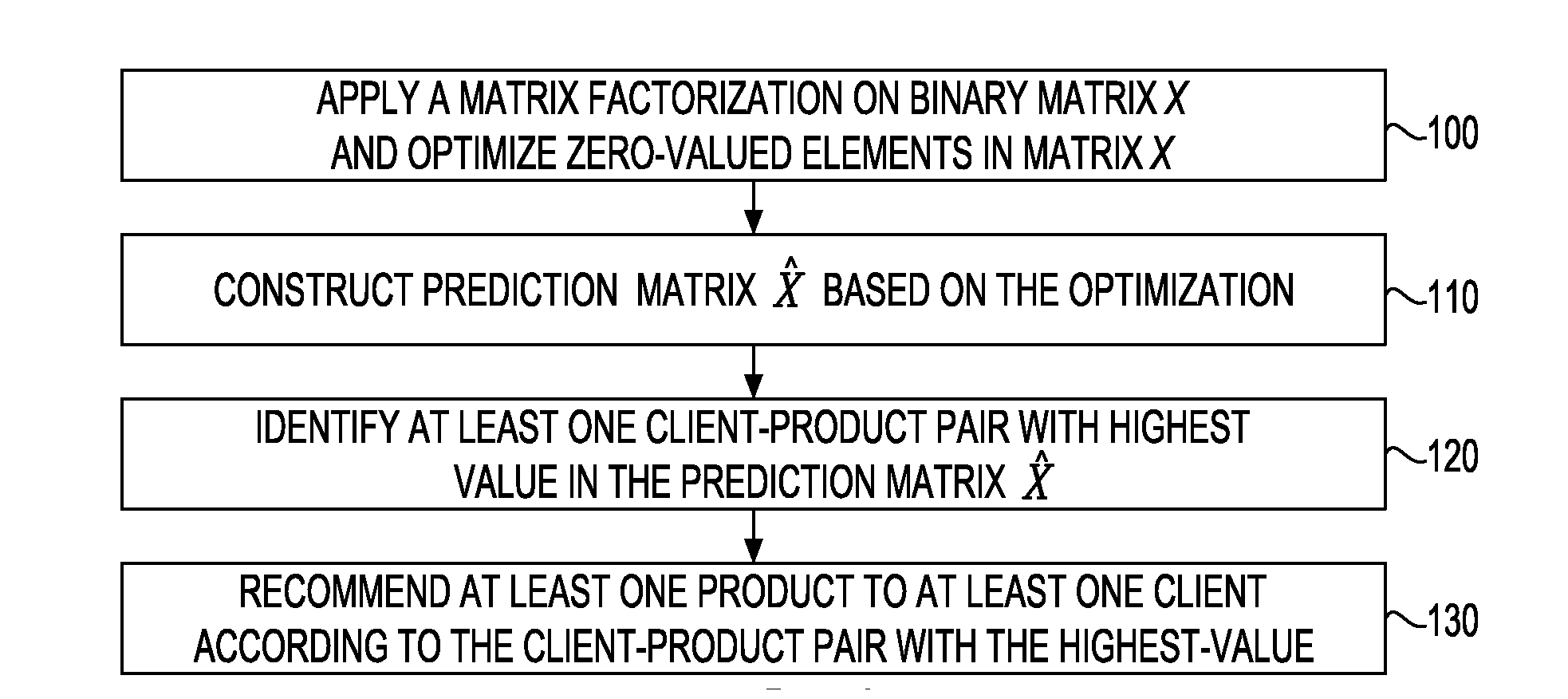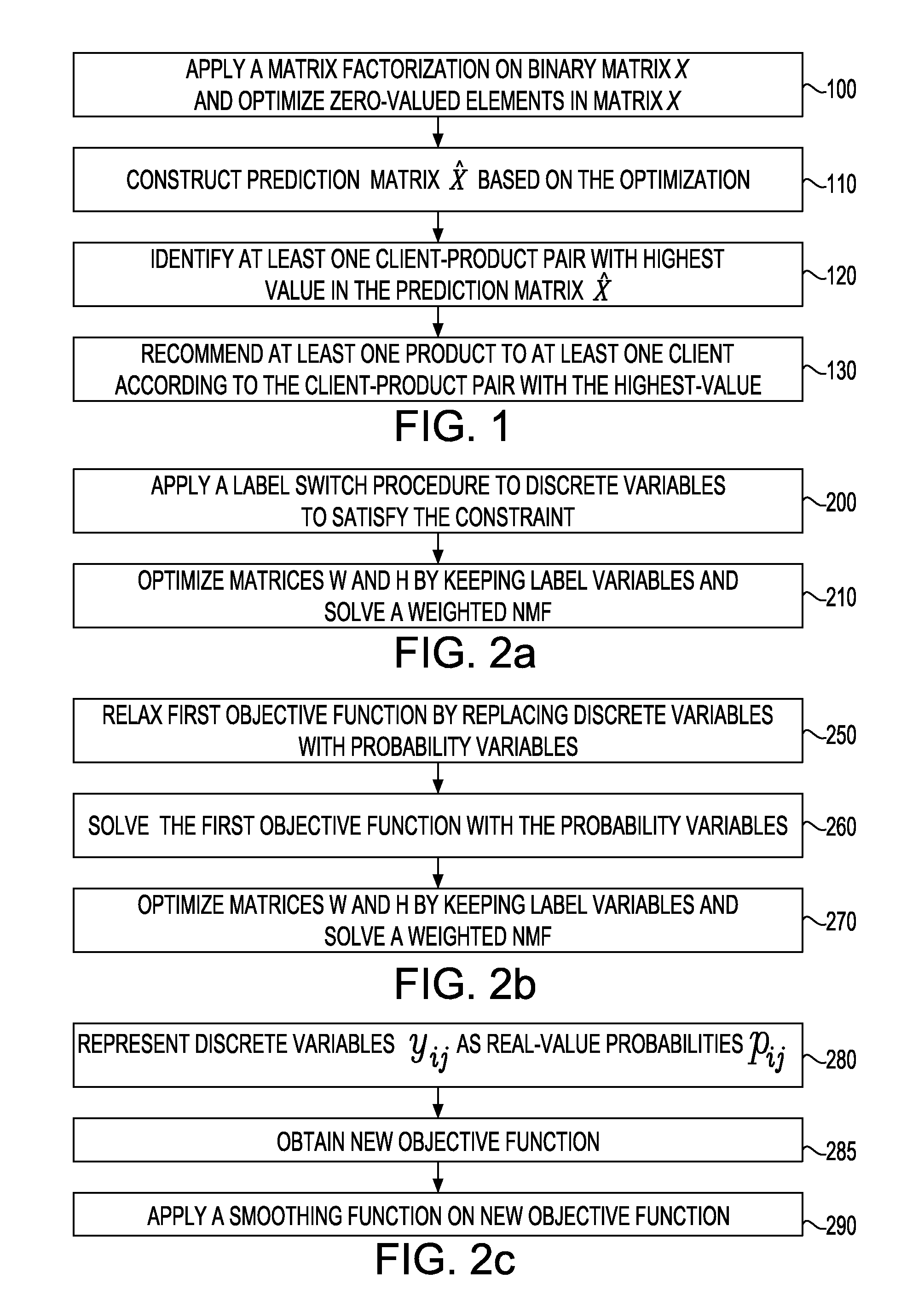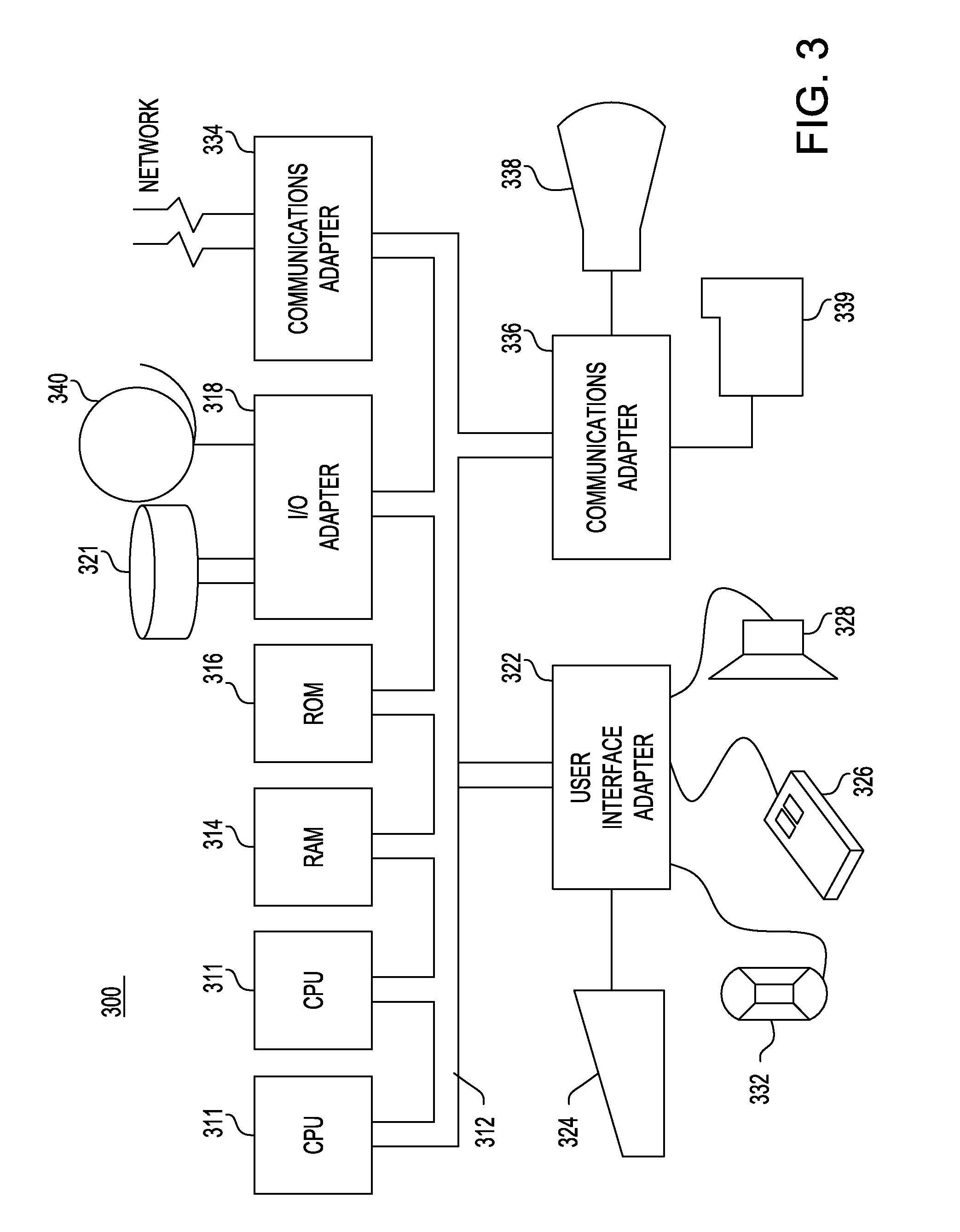Collaborative filtering on spare datasets with matrix factorizations
a dataset and matrix factorization technology, applied in data processing applications, instruments, marketing, etc., can solve the problems of difficult to exact interpret the latent factor, the knowledge is difficult to gather and maintain in the corporation, and the existing techniques do not work well on sparse datasets
- Summary
- Abstract
- Description
- Claims
- Application Information
AI Technical Summary
Benefits of technology
Problems solved by technology
Method used
Image
Examples
Embodiment Construction
[0026]Given a matrix representing a prior purchase history of clients / customers, since a business organization truly does not know a status of an interest of a client in a product that (s)he has yet not purchased, the organization may choose to completely ignore unknown client-product pairs or assume that the affinity between such pairs is low, i.e., no potential future transaction between such pairs. Both of these options are sub-optimal relative to a strategy of treating these pairs as optimization variables (i.e., a variable to be optimized). These optimization variable(s) may be computed simultaneously or sequentially with latent factors (e.g., a client matrix W representing clients and a product matrix H representing products), e.g., by using a weighed NMF technique or other matrix factorization techniques for the latent factors. This simultaneous computing may bring an advantage of learning discriminative latent factors, while simultaneously attempting to assign labels. Discri...
PUM
 Login to View More
Login to View More Abstract
Description
Claims
Application Information
 Login to View More
Login to View More - R&D
- Intellectual Property
- Life Sciences
- Materials
- Tech Scout
- Unparalleled Data Quality
- Higher Quality Content
- 60% Fewer Hallucinations
Browse by: Latest US Patents, China's latest patents, Technical Efficacy Thesaurus, Application Domain, Technology Topic, Popular Technical Reports.
© 2025 PatSnap. All rights reserved.Legal|Privacy policy|Modern Slavery Act Transparency Statement|Sitemap|About US| Contact US: help@patsnap.com



